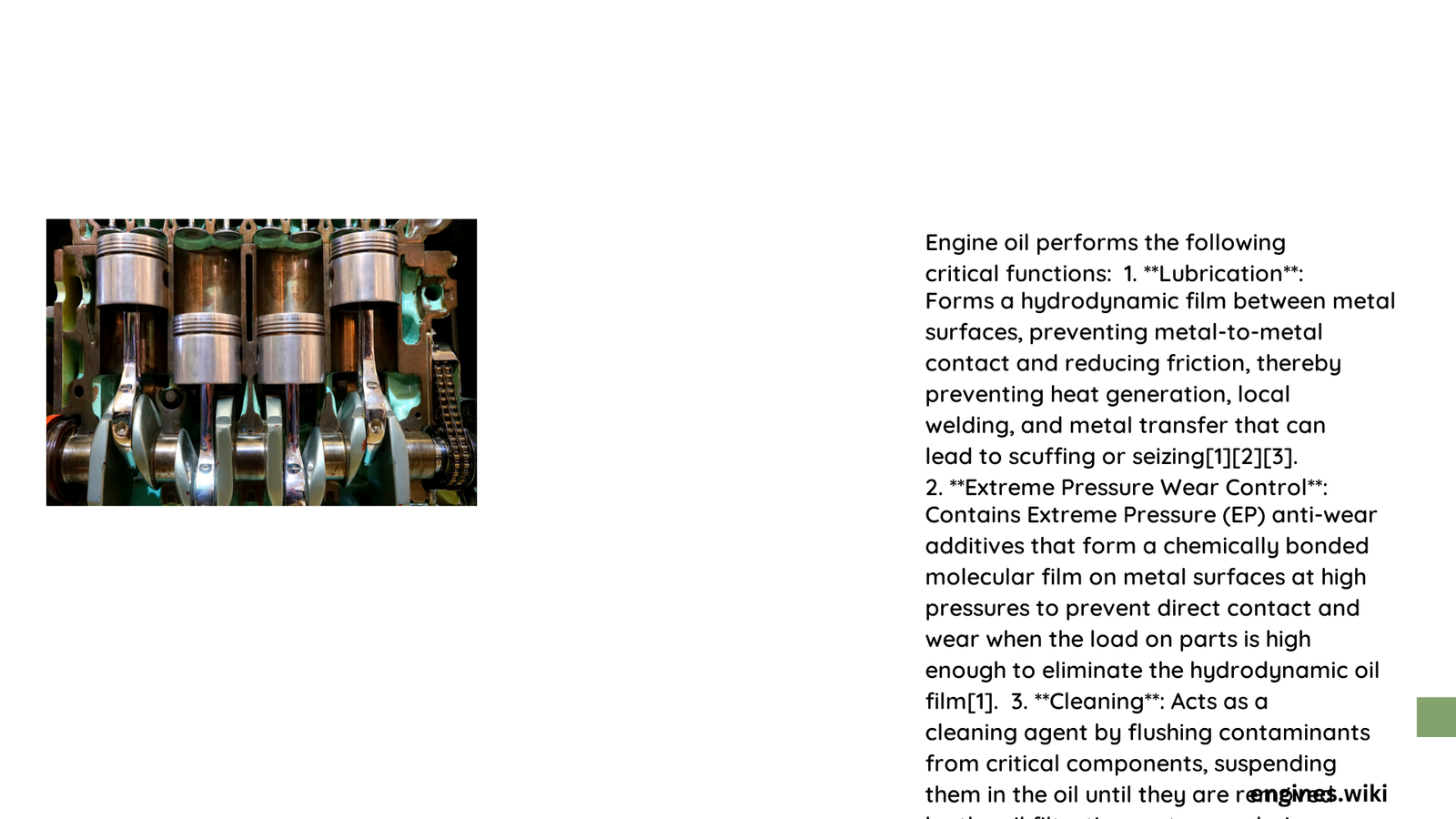Engine oil is a critical fluid that performs multiple vital functions in maintaining an engine’s health and performance. Beyond simple lubrication, it acts as a complex protective system that ensures smooth operation, reduces wear, manages temperature, and keeps internal components clean. Modern engine oils are sophisticated engineering solutions designed to support the intricate mechanical environment within an automotive engine, providing comprehensive protection through advanced chemical formulations and specialized additives.
What Primary Mechanisms Does Engine Oil Use for Lubrication?
Engine oil creates a protective barrier between moving mechanical components through several sophisticated mechanisms:
How Does Oil Film Prevent Metal-to-Metal Contact?
- Molecular Barrier Formation: Creates a microscopic film preventing direct surface interactions
- Friction Reduction: Minimizes mechanical resistance between moving parts
- Heat Dissipation: Helps distribute thermal energy across component surfaces
What Determines Oil’s Lubrication Effectiveness?
| Lubrication Factor | Impact on Performance |
|---|---|
| Viscosity | Determines flow characteristics and protection levels |
| Temperature Range | Influences oil’s ability to maintain protective film |
| Additive Composition | Enhances lubricating properties |
Why Is Viscosity Critical for Engine Protection?
Viscosity ratings like SAE 5W-30 represent the oil’s thickness and flow characteristics across different temperatures. Lower winter (W) ratings indicate better cold-start performance, while higher numbers demonstrate superior high-temperature protection.
How Does Engine Oil Clean Internal Components?

Engine oil incorporates specialized chemical additives to maintain internal cleanliness:
- Detergent Additives: Neutralize corrosive particles
- Dispersant Technologies: Suspend contaminants and prevent sludge formation
- Chemical Stabilizers: Prevent oxidation and degradation
What Cleaning Mechanisms Prevent Deposit Buildup?
- Chemical neutralization of acidic byproducts
- Suspension of microscopic contaminants
- Prevention of carbon and metal particle accumulation
How Does Oil Regulate Engine Temperature?
What Thermal Management Strategies Does Oil Employ?
- Heat Absorption: Captures thermal energy from friction surfaces
- Thermal Transportation: Transfers heat to cooler engine regions
- Temperature Stabilization: Maintains optimal operating range between 80°C to 100°C
What Wear Protection Strategies Does Engine Oil Provide?
How Do Anti-Wear Additives Function?
- Protective Molecular Layers: Form microscopic shields on metal surfaces
- Energy Absorption: Cushion mechanical impacts
- Friction Reduction: Minimize surface degradation
What Performance Metrics Demonstrate Oil’s Protective Capabilities?
Specialized anti-wear additives like zinc dialkyldithiophosphate (ZDDP) can reduce wear rates to approximately 0.1 microns per 1,000 miles, significantly extending component lifespan.
Conclusion: Comprehensive Engine Protection
Engine oil represents a sophisticated engineering solution that goes far beyond simple lubrication. Its multifaceted approach to mechanical protection ensures optimal vehicle performance, longevity, and reliability.
